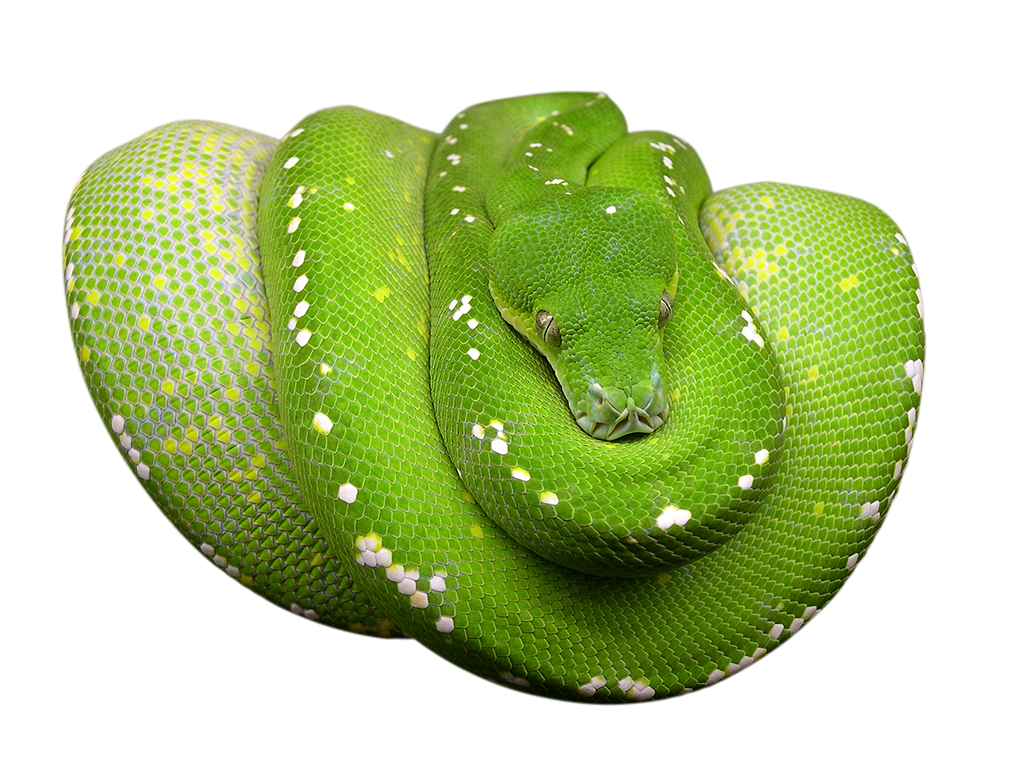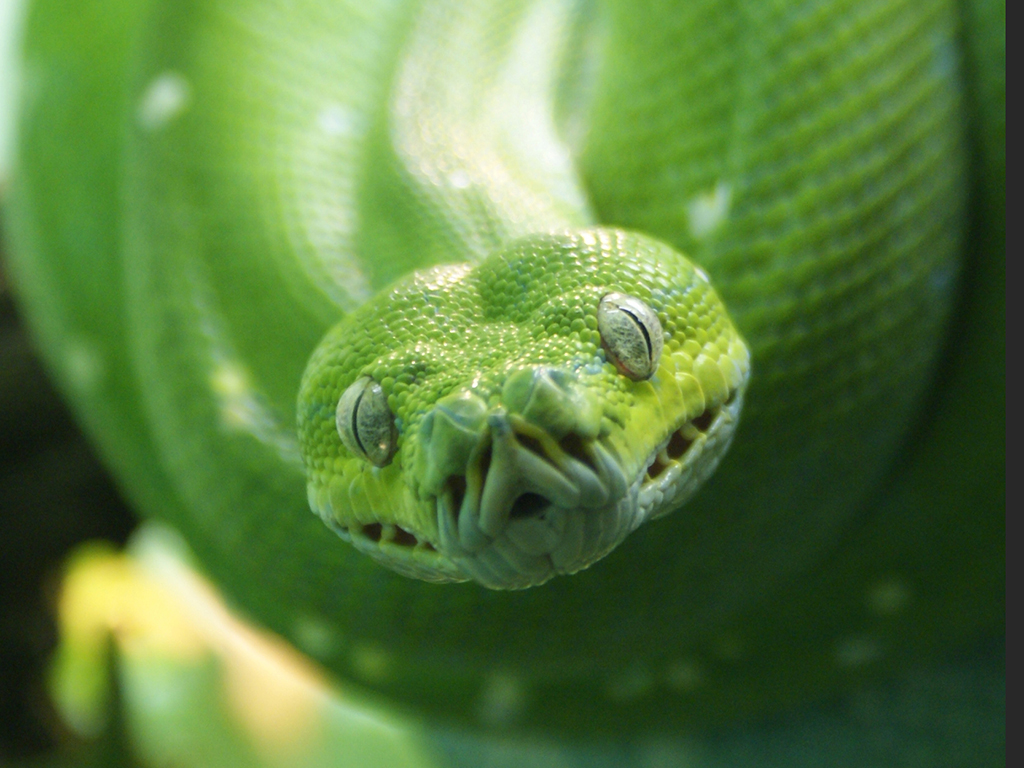Green Tree Python
Morelia viridis

Can “see” heat
High up among the leaves and branches of rainforest trees in the area of New Guinea and northern Australia, the green tree python lies coiled up on a branch. With its bright green colour, it is perfectly camouflaged among the leaves. During the day it rests most of the time, but at night it is ready to attack prey at lightning speed. Along its mouth, the snake has holes called “heat pits”. These allow the green tree python to “see” heat – and thereby sense if any living prey is nearby. Once the snake has caught its prey, it uses its strong muscles to suffocate it, before swallowing the prey whole—head first. The green tree python is not venomous at all, but has long teeth that it uses to catch its prey.

Incubating and warming their eggs
For most of their lives, green tree pythons live alone, but not when it is time for mating. The mating itself has never been studied in the wild, but in captivity it is known that the female and the male wrap around each other in something resembling a standing dance. After mating, the female lays eggs – which she then guards until they hatch. She incubates and warms the eggs by making shaking movements.
When the offspring hatch, they do not have the same bright green colour as their parents. Instead, they are usually bright yellow or orange, colours that are a better camouflage against the bottom of the rainforest – where the juvenile snakes spend their first period of life. As they get older and bigger, they move higher up into the canopy, and their body colour also changes with it. The green tree python is not currently considered endangered according to the Red List, but since the species lives in the rainforest – there is a risk that it will be endangered as the forests disappear.

Photo: Anders-Zimny
Attracting prey with the tip of the tail
The green tree python usually hunts with the help of its heat pits, and waits for its prey. But sometimes it can also use the tip of its tail as a decoy! The tip of the tail is small, narrow and dark, and can resemble a small larva or worm when the snake wiggles it. Then a curious animal might come close – only to be caught by the snake in a flash.
Distribution worldwide
New Guinea, Indonesia and Northern Australia
Whit marking = Distribution

Threat based on the Red List

Trade regulations
CITES: B-listed.